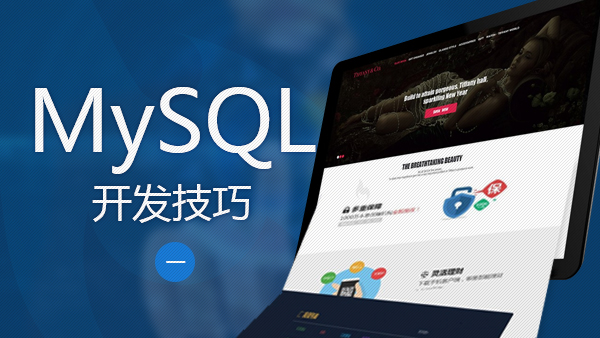弓在箭要射出之前,低声对箭说道,“你的自由是我的”。Schema如箭,弓似Python,选择Python,是Schema最大的自由。而自由应是一个能使自己变得更好的机会。
Schema是什么?
不管我们做什么应用,只要和用户输入打交道,就有一个原则--永远不要相信用户的输入数据。意味着我们要对用户输入进行严格的验证,web开发时一般输入数据都以JSON形式发送到后端API,API要对输入数据做验证。一般我都是加很多判断,各种if,导致代码很丑陋,能不能有一种方式比较优雅的验证用户数据呢?Schema就派上用场了。
㈠ MySQLdb部分
表结构:
?
mysql> use sakila; mysql> desc actor; +-------------+----------------------+------+-----+-------------------+-----------------------------+ | Field | Type | Null | Key | Default | Extra | +-------------+----------------------+------+-----+-------------------+-----------------------------+ | actor_id | smallint(5) unsigned | NO | PRI | NULL | auto_increment | | first_name | varchar(45) | NO | | NULL | | | last_name | varchar(45) | NO | MUL | NULL | | | last_update | timestamp | NO | | CURRENT_TIMESTAMP | on update CURRENT_TIMESTAMP | +-------------+----------------------+------+-----+-------------------+-----------------------------+ 4 rows in set (0.00 sec) |
数据库连接模块:
?
[root@DataHacker ~]# cat dbapi.py #!/usr/bin/env ipython #coding = utf-8 #Author: linwaterbin@gmail.com #Time: 2014-1-29 import MySQLdb as dbapi USER = 'root'PASSWD = 'oracle'HOST = '127.0.0.1'DB = 'sakila' conn = dbapi.connect(user=USER,passwd=PASSWD,host=HOST,db=DB) |
1 打印列的元数据
?
[root@DataHacker ~]# cat QueryColumnMetaData.py #!/usr/bin/env ipython from dbapi import * cur = conn.cursor() statement = """select * from actor limit 1"""cur.execute(statement) print "output column metadata....."printfor record in cur.description: print record cur.close() conn.close() |
1.)调用execute()之后,cursor应当设置其description属性
2.)是个tuple,共7列:列名、类型、显示大小、内部大小、精度、范围以及一个是否接受null值的标记
?
[root@DataHacker ~]# chmod +x QueryColumnMetaData.py [root@DataHacker ~]# ./QueryColumnMetaData.py output column metadata..... ('actor_id', 2, 1, 5, 5, 0, 0) ('first_name', 253, 8, 45, 45, 0, 0) ('last_name', 253, 7, 45, 45, 0, 0) ('last_update', 7, 19, 19, 19, 0, 0) |
2 通过列名访问列值
默认情况下,获取方法从数据库作为"行"返回的值是元组
?
In [1]: from dbapi import * In [2]: cur = conn.cursor() In [3]: v_sql = "select actor_id,last_name from actor limit 2" In [4]: cur.execute(v_sql) Out[4]: 2L In [5]: results = cur.fetchone() In [6]: print results[0] 58 In [7]: print results[1] AKROYD |
我们能够借助cursorclass属性来作为字典返回
?
In [2]: import MySQLdb.cursors In [3]: import MySQLdb In [4]: conn = MySQLdb.connect(user='root',passwd='oracle',host='127.0.0.1',db='sakila',cursorclass=MySQLdb.cursors.DictCursor) In [5]: cur = conn.cursor() In [6]: v_sql = "select actor_id,last_name from actor limit 2" In [7]: cur.execute(v_sql) Out[7]: 2L In [8]: results = cur.fetchone() In [9]: print results['actor_id'] 58 In [10]: print results['last_name'] AKROYD |
㈡ SQLAlchemy--SQL炼金术师
虽然SQL有国际标准,但遗憾的是,各个数据库厂商对这些标准的解读都不一样,并且都在标准的基础上实现了各自的私有语法。为了隐藏不同SQL“方言”之间到区别,人们开发了诸如SQLAlchemy之类的工具
SQLAlchemy连接模块:
?
[root@DataHacker Desktop]# cat sa.py import sqlalchemy as sa engine = sa.create_engine('mysql://root:oracle@127.0.0.1/testdb',pool_recycle=3600) metadata = sa.MetaData() |
example 1:表定义
?
In [3]: t = Table('t',metadata, ...: Column('id',Integer), ...: Column('name',VARCHAR(20)), ...: mysql_engine='InnoDB', ...: mysql_charset='utf8' ...: ) In [4]: t.create(bind=engine) |
example 2:表删除
?
有2种方式,其一: In [5]: t.drop(bind=engine,checkfirst=True) 另一种是: In [5]: metadata.drop_all(bind=engine,checkfirst=True),其中可以借助tables属性指定要删除的对象 |
example 3: 5种约束
?
3 .1 primary key 下面2种方式都可以,一个是列级,一个是表级 In [7]: t_pk_col = Table('t_pk_col',metadata,Column('id',Integer,primary_key=True),Column('name',VARCHAR(20))) In [8]: t_pk_col.create(bind=engine) In [9]: t_pk_tb = Table('t_pk_01',metadata,Column('id',Integer),Column('name',VARCHAR(20)),PrimaryKeyConstraint('id','name',name='prikey')) In [10]: t_pk_tb.create(bind=engine) 3.2 Foreign Key In [13]: t_fk = Table('t_fk',metadata,Column('id',Integer,ForeignKey('t_pk.id'))) In [14]: t_fk.create(bind=engine) In [15]: t_fk_tb = Table('t_fk_tb',metadata,Column('col1',Integer),Column('col2',VARCHAR(10)),ForeignKeyConstraint(['col1','col2'],['t_pk.id','t_pk.name'])) In [16]: t_fk_tb.create(bind=engine) 3.3 unique In [17]: t_uni = Table('t_uni',metadata,Column('id',Integer,unique=True)) In [18]: t_uni.create(bind=engine) In [19]: t_uni_tb = Table('t_uni_tb',metadata,Column('col1',Integer),Column('col2',VARCHAR(10)),UniqueConstraint('col1','col2')) In [20]: t_uni_tb.create(bind=engine) 3.4 check 虽然能成功,但MySQL目前尚未支持check约束。这里就不举例了。 3.5 not null In [21]: t_null = Table('t_null',metadata,Column('id',Integer,nullable=False)) In [22]: t_null.create(bind=engine) |
4 默认值
分2类:悲观(值由DB Server提供)和乐观(值由SQLAlshemy提供),其中乐观又可分:insert和update
?
4.1 例子:insert In [23]: t_def_inser = Table('t_def_inser',metadata,Column('id',Integer),Column('name',VARCHAR(10),server_default='cc')) In [24]: t_def_inser.create(bind=engine) 3.2 例子:update In [25]: t_def_upda = Table('t_def_upda',metadata,Column('id',Integer),Column('name',VARCHAR(10),server_onupdate='DataHacker')) In [26]: t_def_upda.create(bind=engine) 3.3 例子:Passive In [27]: t_def_pass = Table('t_def_pass',metadata,Column('id',Integer),Column('name',VARCHAR(10),DefaultClause('cc'))) In [28]: t_def_pass.create(bind=engine) |
㈢ 隐藏Schema
数据的安全是否暴露在完全可信任的对象面前,这是任何有安全意识的DBA都不会去冒的风险。比较好的方式是尽可能隐藏Schema结构并验证用户输入的数据完整性,这在一定程度上虽然增加了运维成本,但安全无小事。
这里借助开发一个命令行工具来阐述该问题
需求:隐藏表结构,实现动态查询,并将结果模拟mysql \G输出
?
版本: [root@DataHacker ~]# ./sesc.py --version 1.0 查看帮助: [root@DataHacker ~]# ./sesc.py -h Usage: sesc.py [options] <arg1> <arg2> [<arg3>...] Options: --version show program's version number and exit -h, --help show this help message and exit -q TERM assign where predicate -c COL, --column=COL assign query column -t TABLE assign query table -f, --format -f must match up -o -o OUTFILE assign output file 我们要的效果: [root@DataHacker ~]# ./sesc.py -t actor -c last_name -q s% -f -o output.txt [root@DataHacker ~]# cat output.txt ************ 1 row ******************* actor_id: 180 first_name: JEFF last_name: SILVERSTONE last_update: 2006-02-15 04:34:33 ************ 2 row ******************* actor_id: 195 first_name: JAYNE last_name: SILVERSTONE last_update: 2006-02-15 04:34:33 ......<此处省略大部分输出>...... |
请看代码
?
#!/usr/bin/env pythonimport optparsefrom dbapi import * #构造OptionParser实例,配置期望的选项parser = optparse.OptionParser(usage="%prog [options] <arg1> <arg2> [<arg3>...]",version='1.0',)#定义命令行选项,用add_option一次增加一个parser.add_option("-q",action="store",type="string",dest="term",help="assign where predicate")parser.add_option("-c","--column",action="store",type="string",dest="col",help="assign query column")parser.add_option("-t",action="store",type="string",dest="table",help="assign query table")parser.add_option("-f","--format",action="store_true",dest="format",help="-f must match up -o")parser.add_option("-o",action="store",type="string",dest="outfile",help="assign output file")#解析命令行options,args = parser.parse_args()#把上述dest值赋给我们自定义的变量table = options.tablecolumn = options.colterm = options.termformat = options.format#实现动态读查询statement = "select * from %s where %s like '%s'"%(table,column,term)cur = conn.cursor()cur.execute(statement)results = cur.fetchall()#模拟 \G 输出形式if format is True: columns_query = "describe %s"%(table) cur.execute(columns_query) heards = cur.fetchall() column_list = [] for record in heards: column_list.append(record[0]) output = "" count = 1 for record in results: output = output + "************ %s row ************\n\n"%(count) for field_no in xrange(0, len(column_list)): output = output + column_list[field_no]+ ": " + str(record[field_no]) + "\n" output = output + "\n" count = count + 1else: output = [] for record in xrange(0,len(results)): output.append(results[record]) output = ''.join(output)#把输出结果定向到指定文件if options.outfile: outfile = options.outfile with open(outfile,'w') as out: out.write(output)else: print output#关闭游标与连接conn.close()cur.close() |
总结
以上就是本文关于MySQL数据库设计之利用Python操作Schema方法详解的全部内容,希望对大家有所帮助。欢迎参阅:Python定时器实例代码、Python生成数字图片代码分享等,有什么问题可以随时留言,小编会及时回复大家的,欢迎留言交流讨论。

 随时随地看视频
随时随地看视频




